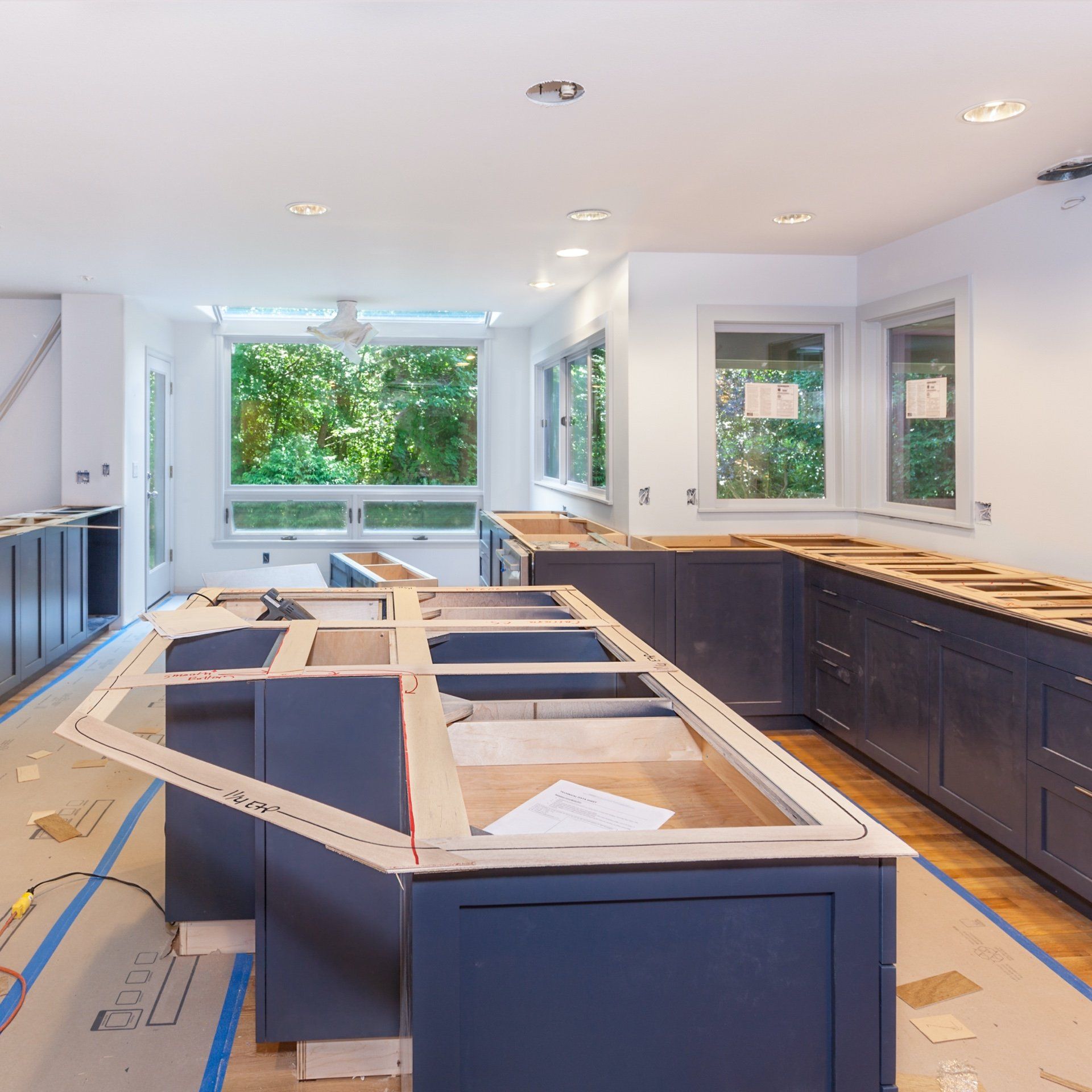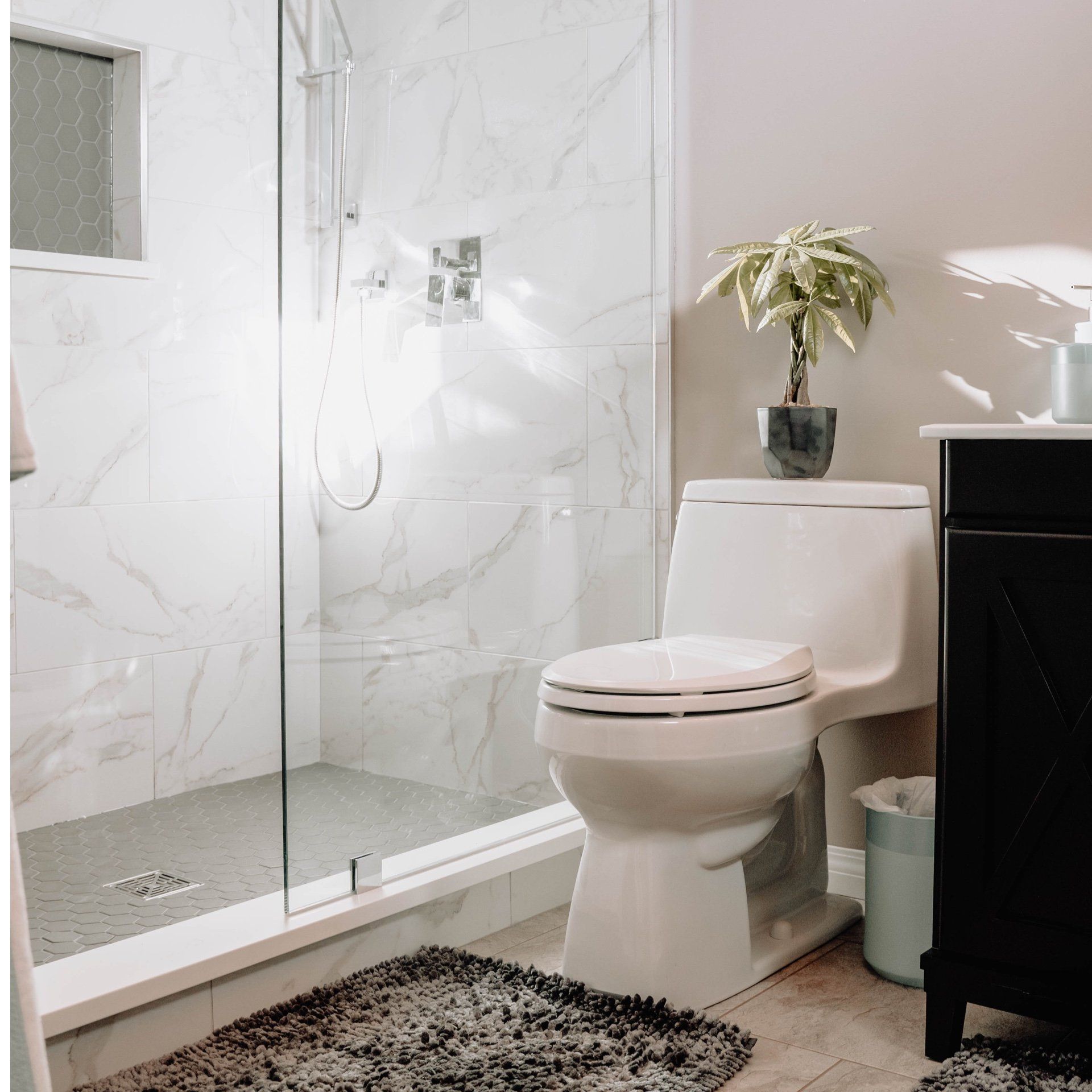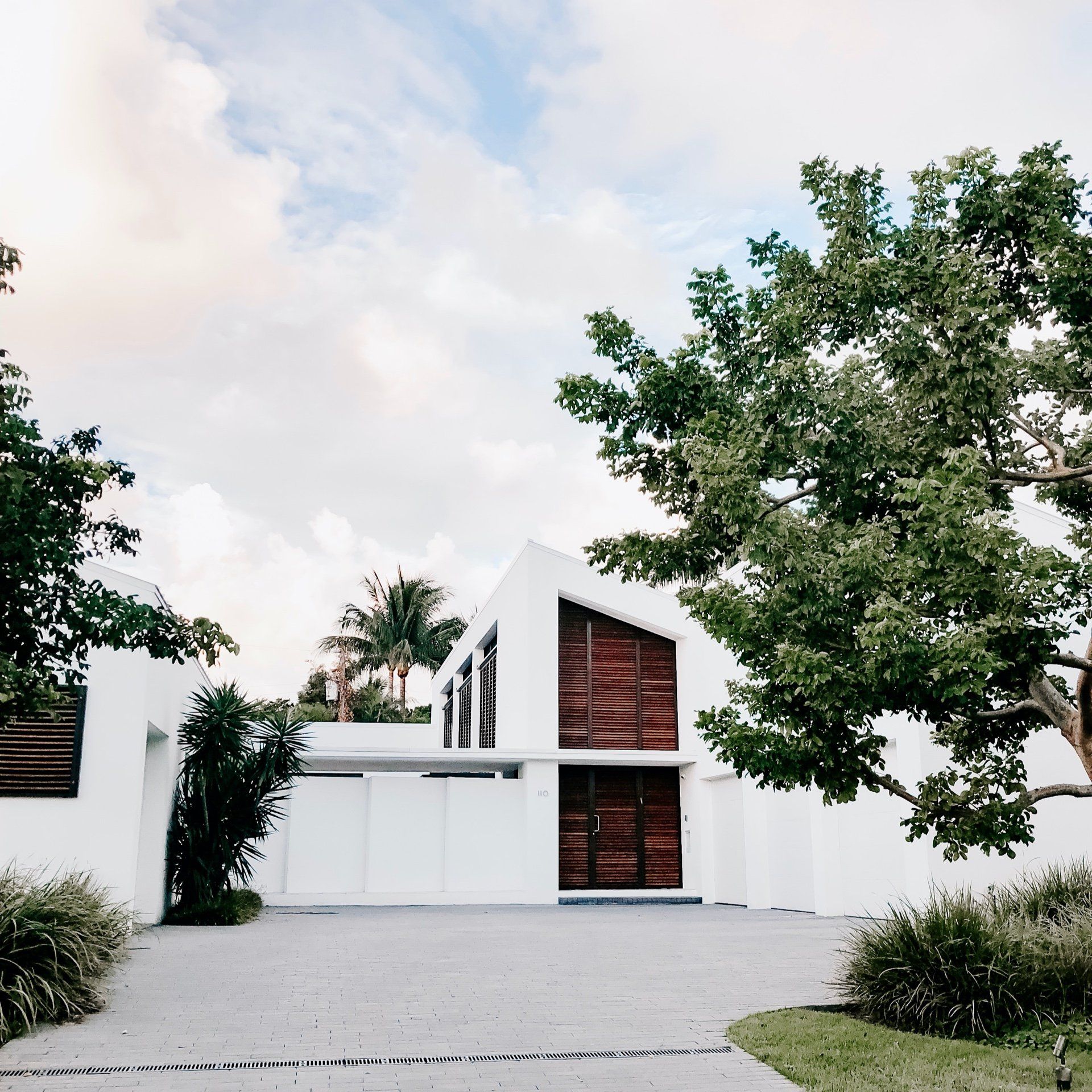Transforming Older Buildings for Sustainability
A Path to Environmental Progress

As April ushers in the beauty of spring across Prince Edward Island, it's a time to reflect on the island's natural wonders and consider how we can protect them for future generations. One way to do this is by addressing the environmental impact of older, inefficient buildings.
In this blog post, we'll explore the environmental benefits of renovating older structures, focusing on making them more sustainable and environmentally friendly. We'll provide a comprehensive guide to sustainable renovation options suitable for PEI's aging buildings.
The Environmental Benefits of Renovating Older Buildings
Energy Efficiency and Reduced Carbon Footprint
One of the primary advantages of renovating older buildings is the opportunity to improve energy efficiency and reduce their carbon footprint. Older structures often lack modern insulation and energy-efficient features. Renovation can remedy this, making buildings more eco-friendly and cost-effective to operate.
Resource Conservation
Renovating older buildings encourages resource conservation. By repurposing existing materials and reducing the need for new construction, renovation minimizes the environmental impact associated with resource extraction, manufacturing, and transportation.
Improved Indoor Air Quality
Older buildings may have issues related to indoor air quality, including the presence of volatile organic compounds (VOCs) and mold. Renovation provides an opportunity to enhance indoor air quality by using low-VOC materials and addressing ventilation and moisture control.
Sustainable Renovation Options for Older Buildings
1. Energy-Efficient Upgrades
Enhance the energy efficiency of older buildings by upgrading insulation, sealing gaps, and installing energy-efficient windows and doors. These improvements not only reduce energy consumption but also enhance occupant comfort.
2. Solar Integration
Harness renewable energy sources by integrating solar panels into the building's design. Solar energy can help power lighting, heating, and cooling systems, reducing reliance on traditional energy sources and lowering utility costs.
3. Eco-Friendly HVAC Systems
Select eco-friendly HVAC systems that prioritize energy efficiency and reduce environmental impact. Modern heating and cooling solutions can be integrated into older buildings, providing better comfort and lower energy bills.
4. Rainwater Harvesting
Implement rainwater harvesting systems to collect and store rainwater for irrigation and non-potable uses. This sustainable practice reduces the demand on municipal water supplies and conserves a valuable resource.
5. Green Insulation
Choose environmentally friendly insulation materials, such as cellulose or natural fibers, to improve thermal performance. These materials provide effective insulation while minimizing environmental impact.
6. Low-VOC Finishes
Improve indoor air quality by using low-VOC paints, finishes, and materials during renovation. This ensures that occupants breathe cleaner air and reduces the release of harmful chemicals into the environment.
Conclusion
Renovating older, inefficient buildings for sustainability is a responsible and forward-thinking approach to environmental progress. By improving energy efficiency, conserving resources, and enhancing indoor air quality, we can make a positive impact on our environment while ensuring that these buildings remain functional and comfortable for years to come.
If you're considering sustainable renovation projects for your older building in PEI, Maple Arc Construction is here to help. Our team of experts specializes in transforming aging structures into environmentally friendly and energy efficient spaces that reflect your commitment to a greener tomorrow on Prince Edward Island.
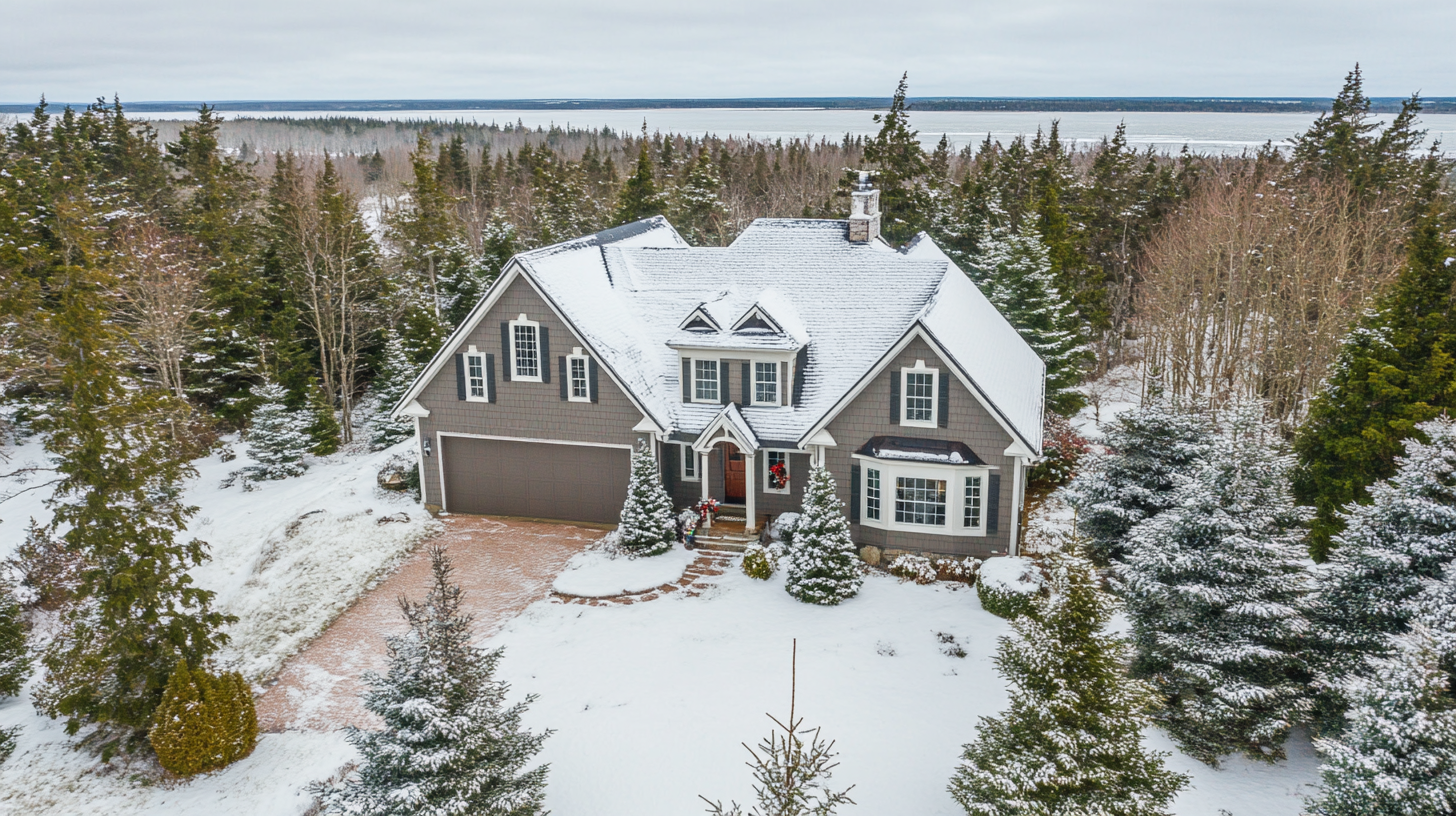
As the holiday season envelops Prince Edward Island in a blanket of festive cheer, there's no better time to explore how custom home design can reflect the warmth and traditions of this special time of year. For local homebuilders and general contractors, December presents a unique opportunity to highlight how custom homes can be tailored to embrace the holiday spirit while showcasing the island's rich cultural heritage. Incorporating Local Holiday Traditions Prince Edward Island is known for its vibrant holiday traditions, from community gatherings to festive markets. When designing a custom home, consider incorporating elements that celebrate these local customs. This could include creating expansive dining areas perfect for hosting family feasts or designing living spaces that can easily accommodate a Christmas tree and other seasonal decorations. By integrating these features, homeowners can enjoy a seamless blend of personal style and local tradition. Seasonal Design Elements Winter in Prince Edward Island offers a stunning backdrop for incorporating seasonal design elements into custom homes. Natural materials like wood and stone not only add warmth and texture but also harmonize beautifully with the island's winter landscape. Consider using these materials in fireplaces, flooring, or accent walls to create cozy, inviting spaces that are perfect for relaxing during the colder months. Energy Efficiency During Winter The holiday season is also a time when energy efficiency becomes particularly important. Custom homes can be designed with features that enhance comfort while minimizing energy costs. Advanced insulation, energy-efficient windows, and smart heating systems ensure that homes remain warm and inviting without excessive energy use. These features not only contribute to a sustainable lifestyle but also provide peace of mind during the chilly winter months. Outdoor Living Spaces for Winter Even as temperatures drop, outdoor spaces can still be enjoyed with thoughtful design considerations. Covered patios equipped with fire pits or outdoor kitchens allow homeowners to entertain guests amidst the beauty of a winter landscape. These spaces can be designed to offer shelter from the elements while providing a cozy spot for roasting marshmallows or enjoying a warm beverage under the stars. Showcasing Local Events and Markets December is bustling with holiday events across Prince Edward Island, such as the Charlottetown Christmas Festival and various local markets. Custom homebuilders can highlight how new homeowners can engage with these community activities, fostering a sense of belonging and connection. Additionally, encouraging clients to support local artisans when decorating or furnishing their homes not only enhances their living space but also strengthens ties within the community. Planning Ahead for Spring Builds For those considering starting a custom home project next spring, now is the perfect time to reach out to builders and contractors. By beginning the planning process during the winter months, prospective homeowners can secure availability and ensure their project gets off the ground smoothly when warmer weather arrives. Early engagement allows for comprehensive planning, including design finalization and securing necessary permits, which can streamline construction timelines and help avoid potential delays. By focusing on these aspects of custom home design and planning ahead for future builds, builders and contractors can create homes that are not only functional and beautiful but also deeply connected to the spirit of Prince Edward Island during the holiday season. Whether it's through embracing local traditions or enhancing energy efficiency, there are countless ways to infuse festive flair into every corner of a custom-built home. Call us today to get started on your planning for next year!
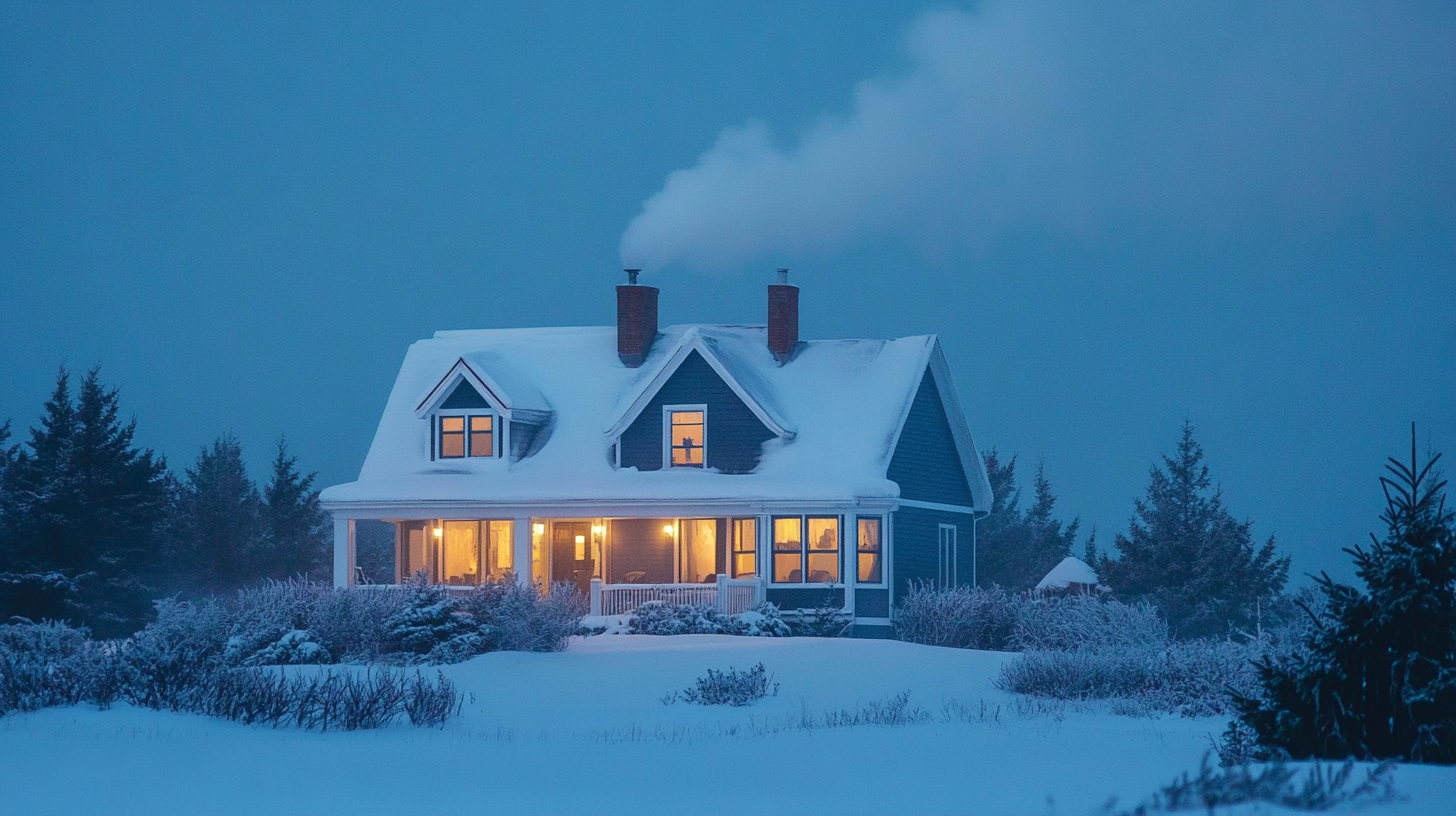
As November sweeps across Prince Edward Island, it brings with it a whisper of what's to come—the iconic Canadian winters. While PEI's winter wonderland is a sight to behold, it also presents unique challenges. Extreme cold temperatures, heavy snow accumulation, and occasional power outages can turn the season into a test of resilience. The key to a safe and comfortable winter lies in proper preparation. In this blog post, we'll explore the importance of winterproofing your home in PEI and provide a comprehensive winterproofing checklist to ensure you and your family stay warm and secure throughout the season. The Significance of a Winter-Ready Home Extreme Cold Temperatures - PEI winters are known for their frigid temperatures, which can plummet well below freezing. A winter-ready home acts as a fortress against the cold, providing a comfortable refuge from the chill. Snow Accumulation - Heavy snowfall is a common occurrence on the island, and it can lead to various challenges, including blocked driveways, roof stress, and difficulties in accessing your property. A well-prepared home is equipped to handle snow and its potential effects. Power Outages - Winter storms can sometimes result in power outages. A winterproofed home is equipped with backup heating solutions, emergency lighting, and the necessary supplies to weather such disruptions without discomfort. Winterproofing Checklist 1. Insulate Pipes Frozen pipes can cause extensive damage to your home and result in costly repairs. Insulate exposed pipes in crawl spaces, basements, and attics to prevent freezing. Use heat tape or pipe insulation sleeves for added protection. 2. Seal Gaps and Cracks Inspect your home for gaps and cracks in walls, windows, and doors. Seal them with weatherstripping, caulk, or spray foam insulation. Addressing these gaps prevents cold drafts and heat loss. 3. Heating System Maintenance Schedule a professional inspection and maintenance of your heating system. Ensure that furnaces, boilers, and heating vents are in peak condition. Replace air filters regularly for efficient heating. 4. Fireplace and Chimney Inspection If you have a fireplace or wood-burning stove, have the chimney and flue inspected and cleaned by a professional. Ensure that the damper is functioning correctly and that you have an adequate supply of firewood. 5. Roof and Gutters Inspect the roof for damaged or missing shingles and repair them. Clean gutters and downspouts to prevent ice dams, which can lead to roof damage and water leaks. Consider installing roof heating cables to prevent ice buildup. 6. Emergency Supplies Create an emergency kit that includes essentials like flashlights, batteries, non-perishable food, water, blankets, and a first-aid kit. Ensure that you have backup heating options, such as a generator or portable heaters, in case of power outages. 7. Winterize Outdoor Spaces Prepare your outdoor spaces for winter by storing or covering outdoor furniture, draining garden hoses, and insulating outdoor faucets. Consider using snow stakes to mark pathways and driveways for easy navigation in deep snow. 8. Emergency Heating Invest in a backup heating solution, such as a propane or kerosene space heater, in case of heating system failures. Ensure that you have a safe and well-ventilated area for their use. Conclusion Preparing your home for PEI winters is a wise and necessary investment in your family's safety and comfort. Extreme cold temperatures, heavy snow accumulation, and potential power outages can be managed with proper winterproofing. By following this comprehensive checklist and taking proactive measures, you can ensure that your home remains a warm and secure haven throughout the season. If you're ready to winterproof your home or need assistance with any of the tasks mentioned in the checklist, Maple Arc Construction is here to help. Our team of experts specializes in preparing homes for PEI winters, ensuring that you're well- equipped to embrace the beauty and challenges of the season. Stay warm, stay safe, and enjoy the magic of winter on Prince Edward Island!
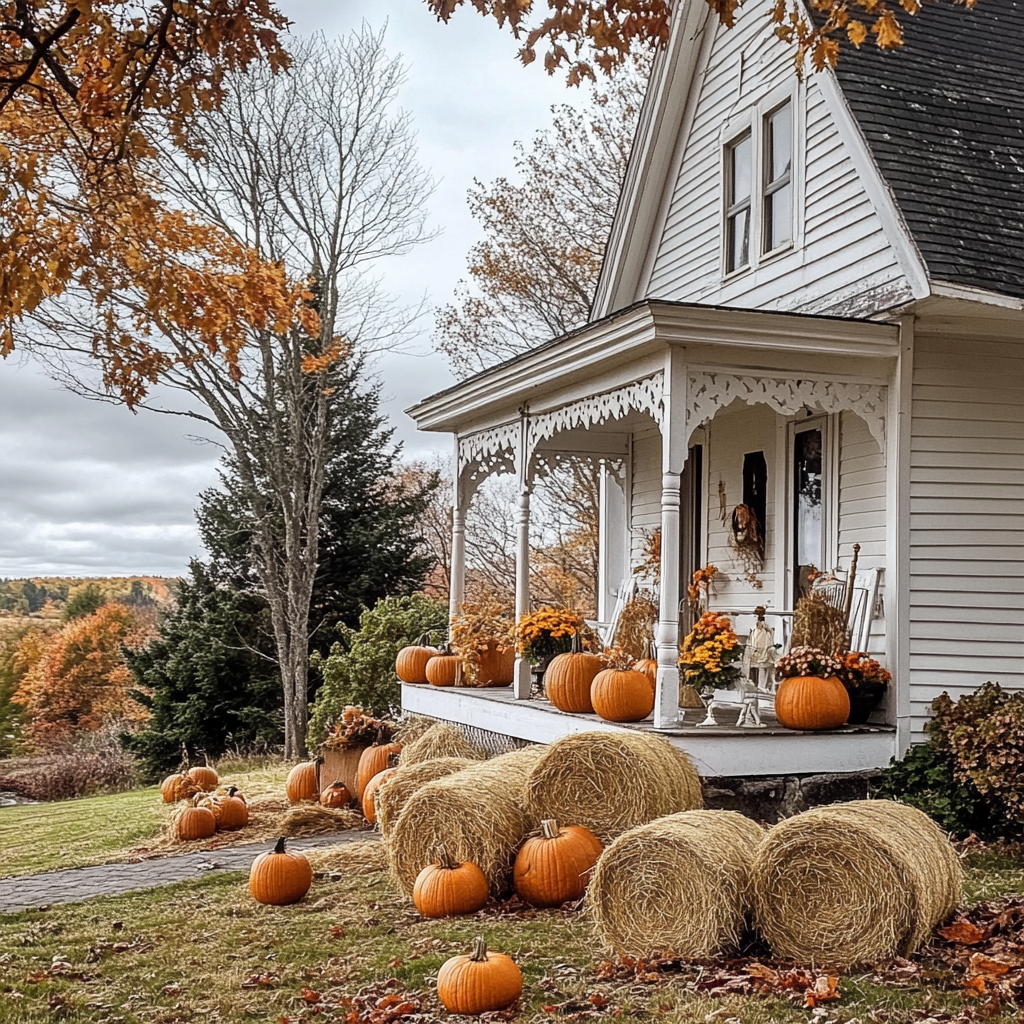
As October arrives on Prince Edward Island, the anticipation of the holiday season begins to twinkle in the air. The holidays bring a sense of joy, togetherness, and the opportunity to create lasting memories. It's also the perfect time to transform your home into a festive haven that embodies the spirit of the season. In this blog post, we'll explore budget-friendly holiday home renovations that allow you to deck the halls without breaking the bank. We'll guide you through holiday renovation planning, emphasizing the importance of early preparation, and provide a list of DIY holiday projects that will infuse your home with festive charm. Holiday Renovation Planning 1. Set a Realistic Budget Before diving into holiday renovations, establish a clear and realistic budget. Determine how much you're willing to spend on both materials and labor. A well-defined budget helps you prioritize projects and avoid overspending. 2. Plan Early Early planning is the key to stress-free holiday renovations. Begin brainstorming ideas and making project lists in October. This allows ample time for sourcing materials, booking contractors (if necessary), and completing projects at a relaxed pace. 3. Assess Your Space Take a critical look at your home to identify areas that could benefit from holiday renovations. Consider high-traffic spaces like the living room, dining room, and kitchen, as well as guest areas if you'll be hosting visitors. 4. Prioritize Projects Not all holiday renovations need to be tackled at once. Prioritize projects based on their importance and impact. Focus on projects that will make the most significant difference in your holiday celebrations. DIY Holiday Projects 1. Create Festive Decor Crafting holiday decorations is not only budget-friendly but also a creative way to personalize your home. Make your own wreaths, garlands, and ornaments using materials like pinecones, twine, and ribbon. Get the whole family involved for added fun. 2. Revamp the Guest Room If you're expecting holiday guests, give your guest room a cozy makeover. Swap out bedding for warm, seasonal options, add festive throw pillows, and provide thoughtful amenities like fresh towels and a bedside reading lamp. 3. Update the Kitchen The kitchen is the heart of holiday cooking and baking. Consider budget-friendly updates like a fresh coat of paint on cabinets, new hardware, or a stylish backsplash. These changes can breathe new life into your kitchen without a major renovation. 4. Lighting Enhancements Upgrade your lighting for a warm and inviting atmosphere. Replace harsh fluorescent bulbs with soft, warm-toned LED bulbs. Consider string lights or candles for added ambiance in common areas. 5. Outdoor Decor Don't forget to extend your holiday renovations outdoors. Decorate the front porch or entryway with seasonal wreaths, garlands, and potted plants. Add pathway lighting for a magical touch during the evening. 6. Cozy Nooks Create cozy nooks or reading corners in your home with plush throw blankets, oversized cushions, and warm lighting. These inviting spaces encourage relaxation and conversation during the holiday season. Conclusion Budget-friendly holiday home renovations allow you to infuse your space with festive cheer without straining your finances. With early planning, a realistic budget, and creative DIY projects, you can create a warm and welcoming environment that embraces the spirit of the season. Whether you're hosting guests or celebrating quietly at home, these renovations will enhance your holiday experience and create lasting memories. If you're ready to embark on holiday home renovations or need assistance with your projects, Maple Arc Construction is here to help. Our team of experts can guide you through budget-friendly updates that will transform your home into a festive oasis. Embrace the holiday season with confidence and style, knowing that your home reflects the warmth and joy of the holidays on Prince Edward Island.
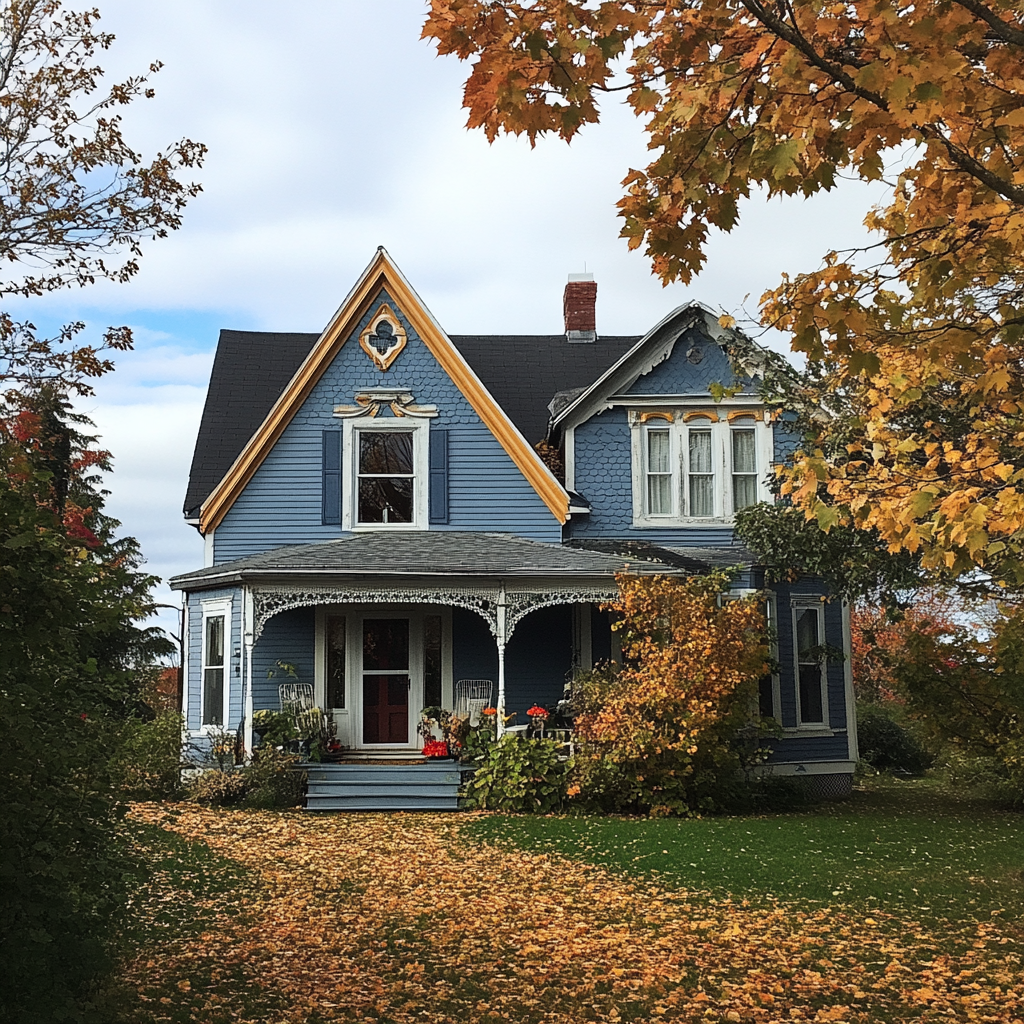
Fall Home Renovations: Preparing for a Cozy Winter As September graces Prince Edward Island with its cooler temperatures and the first hints of autumn colors, it's a reminder that winter is not far behind. While winter on the island is undeniably beautiful, it can also be harsh and demanding. To ensure a comfortable and energy-efficient winter, fall is the ideal time to undertake essential home renovations. In this blog post, we'll explore the fall renovation essentials that every homeowner should consider, from insulation upgrades to HVAC system maintenance. We'll also provide energy efficiency tips to help you optimize your home for a cozy winter on PEI. Fall Renovation Essentials 1. Insulation Upgrades Ensuring proper insulation is crucial for maintaining a warm and energy-efficient home during the winter. Consider upgrading attic and wall insulation, sealing gaps and cracks, and insulating crawl spaces. Adequate insulation not only keeps the cold out but also reduces heating costs. 2. HVAC System Maintenance Before the cold weather sets in, schedule a professional HVAC system maintenance check. This includes cleaning or replacing air filters, checking for leaks or damage, and verifying that the heating system is functioning at peak efficiency. Regular maintenance extends the lifespan of your system and ensures consistent warmth. 3. Window and Door Inspection Inspect windows and doors for drafts, cracks, or gaps. Seal any leaks with weatherstripping or caulking. If your windows are old and inefficient, consider upgrading to energy-efficient double or triple-glazed windows to reduce heat loss. 4. Roof and Gutters Check the roof for damaged or missing shingles and repair or replace as needed. Ensure that gutters and downspouts are clear of debris to prevent ice dams from forming, which can lead to roof damage and water leaks. 5. Chimney and Fireplace Maintenance If you have a fireplace or wood-burning stove, have the chimney cleaned and inspected by a professional. Ensure that the damper is functioning correctly, and stock up on firewood for cozy winter evenings. Energy Efficiency Tips 1. Seal Drafts Use weatherstripping or caulking to seal drafts around windows and doors. Check for gaps in baseboards, electrical outlets, and plumbing penetrations and seal them to prevent cold air infiltration. 2. Optimize Heating Systems Invest in a programmable thermostat that allows you to set lower temperatures when you're away or asleep and higher temperatures when you're at home and awake. Regularly replace air filters in your heating system to maintain efficiency. 3. Upgrade Lighting Switch to energy-efficient LED or CFL light bulbs. These bulbs not only use less energy but also emit less heat, reducing the load on your heating system. 4. Manage Sunlight During the day, open curtains and blinds to allow sunlight to naturally heat your home. Close them at night to reduce heat loss through windows. 5. Schedule an Energy Audit Consider scheduling a professional energy audit for your home. An energy audit can pinpoint areas of energy waste and provide recommendations for improvement. Conclusion Fall is a crucial time for home renovations and energy efficiency preparations to ensure a cozy and cost-effective winter on Prince Edward Island. By addressing insulation upgrades, HVAC system maintenance, and other essential tasks, you can enjoy a comfortable home while minimizing heating costs. Additionally, energy efficiency tips and improvements help you reduce your carbon footprint and contribute to a more sustainable future. If you're ready to embark on fall home renovations or need assistance optimizing your home for winter, Maple Arc Construction is here to help. Our team of experts specializes in ensuring your home is warm, comfortable, and energy-efficient during the coldest months. Don't wait until winter arrives—start your fall preparations today and embrace the season with confidence and warmth.
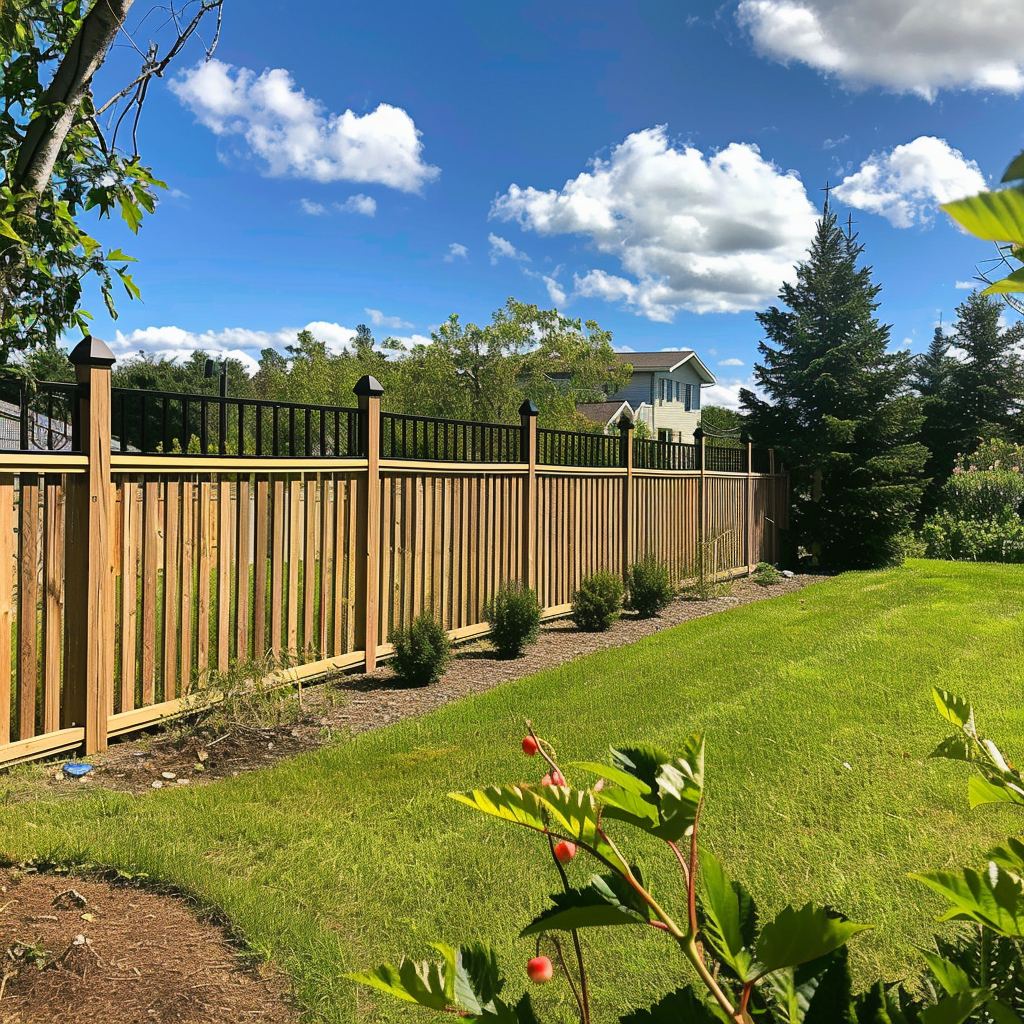
As August arrives on Prince Edward Island, it brings warm sunshine and the promise of outdoor gatherings and relaxation in our own private spaces. Whether you're looking to define your property boundaries, enhance privacy, or add a touch of aesthetic charm, choosing the perfect fence is a pivotal decision. In this blog post, we'll delve into the essential factors homeowners should consider when selecting a fence, including privacy needs, aesthetics, durability, and compliance with local regulations. We'll also explore various fencing materials, their advantages, and their suitability for PEI's unique climate, empowering you to make informed decisions for your property. Fence Selection Criteria 1. Privacy Needs The level of privacy you desire should be a primary consideration. If you seek complete seclusion, consider solid fencing materials like wood or vinyl. For a more open and airy feel, opt for materials like aluminum or ornamental iron that provide partial privacy while preserving visibility. 2. Aesthetics and Style Your fence should complement the architectural style of your home and enhance its curb appeal. Explore different styles, such as picket, ranch, split rail, or contemporary designs, and choose one that resonates with your personal taste. 3. Durability and Maintenance Consider the long-term maintenance requirements of your chosen fence material. While wood offers a classic look, it may require periodic staining or painting. Vinyl and aluminum, on the other hand, are low-maintenance options that withstand PEI's climate with minimal care. 4. Local Regulations Before installing a fence, familiarize yourself with local regulations, including height restrictions, setback requirements, and property line considerations. Ensuring compliance with these regulations prevents potential legal issues. Fencing Materials: Advantages and Suitability 1. Wood Fencing Advantages: Wood fences offer a classic and timeless appearance, providing natural beauty and warmth to your property. They can be stained or painted in various colors to match your home's exterior. Suitability for PEI: While wood is a popular choice, it requires regular maintenance to prevent rot and decay due to PEI's humid climate. Proper sealing and staining are essential to prolong the life of a wood fence. 2. Vinyl Fencing Advantages: Vinyl fences are incredibly low-maintenance, requiring minimal care to retain their appearance. They resist rot, decay, and pests, making them an excellent choice for humid environments. Suitability for PEI: Vinyl is an ideal choice for PEI's climate due to its durability and resistance to moisture. It can withstand the island's weather conditions without warping or deteriorating. 3. Aluminum Fencing Advantages: Aluminum fences offer a sophisticated and open design that provides partial privacy while maintaining visibility. They are rust-resistant, durable, and virtually maintenance-free. Suitability for PEI: Aluminum fences are well-suited to PEI's climate, as they do not corrode or deteriorate in humid conditions. They maintain their appearance and structural integrity over time. 4. Chain-Link Fencing Advantages: Chain-link fences are cost-effective, durable, and offer security without completely obstructing visibility. They are suitable for enclosing larger properties. Suitability for PEI: Chain-link fences are durable and can withstand PEI's weather conditions. They are a practical choice for properties where full privacy is not a primary concern. Conclusion Choosing the perfect fence for your property is a significant decision that combines practicality and aesthetics. Consider your privacy needs, the fence's visual impact, durability, and local regulations when making your choice. Additionally, select a fencing material that aligns with PEI's climate and maintenance requirements to ensure your investment stands the test of time. If you're ready to explore fencing options for your property on Prince Edward Island, Maple Arc Construction is here to assist. Our team of experts can guide you through the selection process, helping you choose the perfect fence that enhances your property's beauty, privacy, and functionality. Don't miss the opportunity to transform your property into a haven of privacy and charm with the ideal fence.
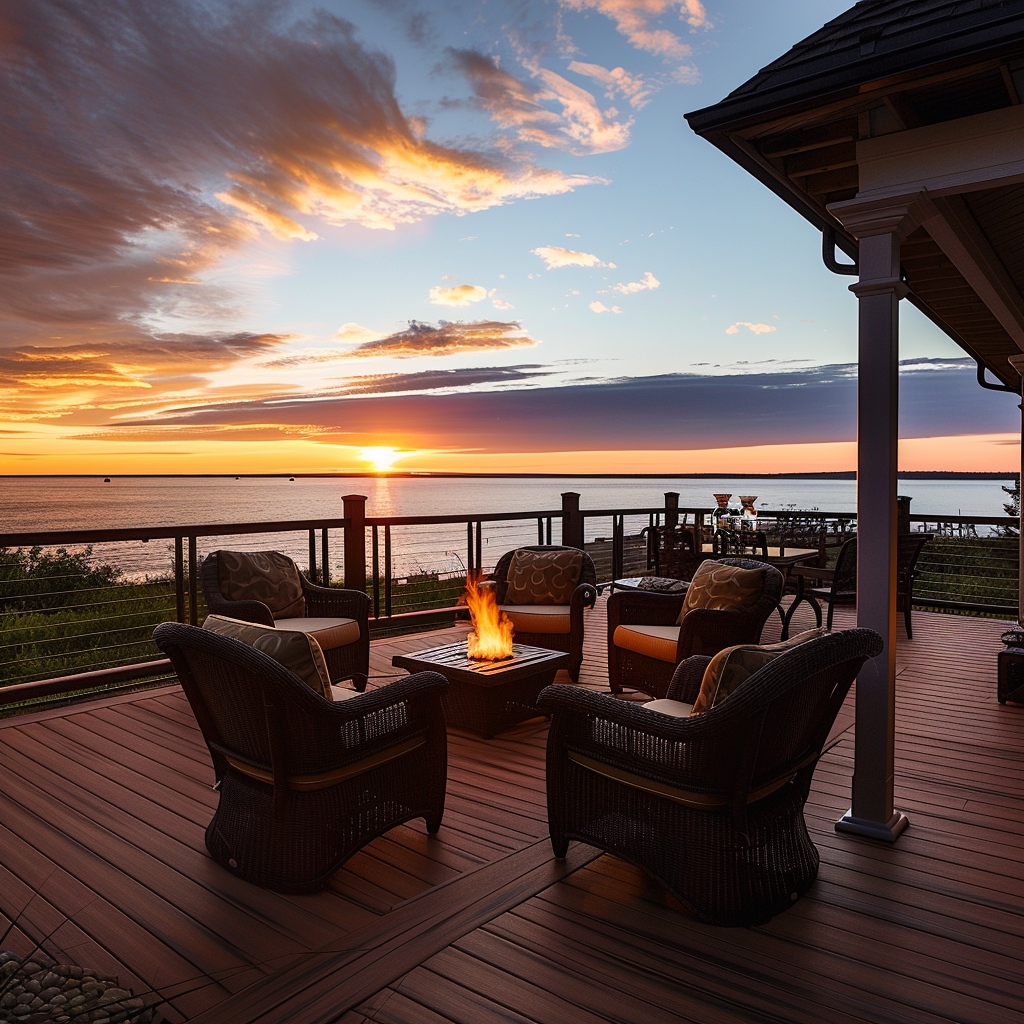
As July blankets Prince Edward Island in the warmth of summer, the island's natural beauty comes to life in a symphony of colors and fragrances. It's the season when we yearn to spend more time outdoors, soaking in the sun, enjoying gentle breezes, and relishing the island's scenic vistas. Creating an outdoor living space, complete with a well-designed deck, allows us to savour these moments and enhance our connection to PEI's unique charm. In this blog post, we'll explore the allure of outdoor living spaces on the island and provide a variety of deck design ideas that capture the essence of PEI's beauty and climate. The Allure of Outdoor Living Spaces - Embracing PEI's Natural Beauty Prince Edward Island boasts some of the most captivating natural beauty in Canada. From pristine beaches to lush landscapes, there's no shortage of stunning views to enjoy. An outdoor living space, particularly a well-planned deck, allows you to immerse yourself in this natural splendor, creating a seamless connection between your home and the great outdoors. Pleasant Weather and Seasonal Enjoyment PEI enjoys pleasant summer weather with comfortable temperatures and extended daylight hours. This makes the island an outdoor enthusiast's paradise. A thoughtfully designed deck extends your living space into the fresh air, providing the perfect setting for everything from morning coffee to sunset gatherings. Added Value to Your Property Incorporating a beautifully designed deck into your property not only enhances your lifestyle but also adds significant value to your home. Potential buyers appreciate the appeal of outdoor living spaces, making a well-maintained deck an attractive feature for future resale. Deck Design Ideas for PEI 1. Coastal Paradise Deck Capture the essence of PEI's coastal charm with a deck that celebrates waterfront views. Opt for a design that maximizes sightlines and incorporates nautical-inspired elements. Use weather-resistant materials like composite decking and stainless steel railings for durability. 2. Secluded Garden Retreat Create a private oasis with a deck nestled among lush gardens and greenery. Enclose the space with trellises, lattice, or privacy screens covered in climbing plants for added seclusion. Choose natural wood finishes to blend seamlessly with the surrounding nature. 3. Elevated Sunset Lounge Elevate your outdoor experience with a multi-level deck that allows you to chase the sun. Design a spacious lounge area with comfortable seating, a fire pit, and built-in lighting. Incorporate glass railings for unobstructed views of the sunset. 4. Rustic Cabin Deck Embrace the rustic charm of a PEI cabin with a deck that exudes coziness and warmth. Use reclaimed wood for the flooring and incorporate wooden benches with plaid cushions. Install a pergola for added shade and a touch of rustic elegance. 5. Island Contemporary Deck Achieve a modern, island-inspired deck with clean lines and a minimalist aesthetic. Opt for low-maintenance materials like composite decking and sleek, cable railings. Add contemporary outdoor furniture in bright, island-inspired colors. 6. Classic Maritime Deck Pay homage to PEI's maritime heritage with a classic deck design. Use natural wood finishes, traditional balusters, and a white pergola to create a timeless look. Incorporate built-in benches for a cozy and welcoming atmosphere. Designing your dream outdoor space on Prince Edward Island is a captivating endeavour that allows you to embrace the island's natural beauty, pleasant weather, and the added value of a well designed deck. Whether you're seeking coastal paradise views, a secluded garden retreat, or a modern island-inspired oasis, there's a deck design idea that captures the essence of PEI's charm. If you're ready to embark on the journey of creating your dream outdoor space, Maple Arc Construction is here to bring your vision to life. Our team of experts specializes in designing and constructing decks that harmonize with the island's unique climate and landscape. Let us help you transform your outdoor living dreams into a reality that shines brightly on Prince Edward Island.
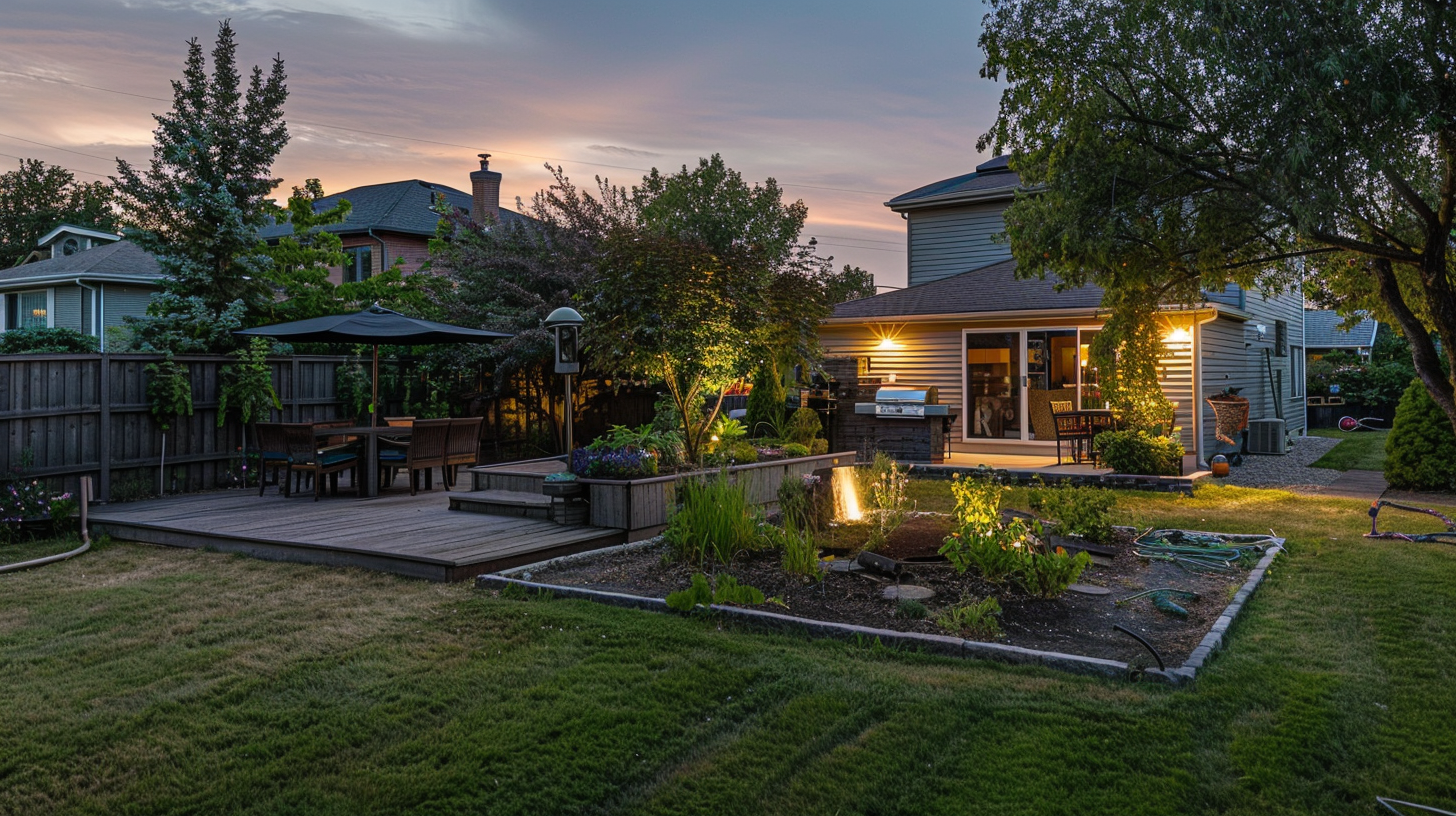
As June graces Prince Edward Island with its warm embrace, the island comes alive with lush greenery and the promise of sunny days ahead. It's a season of renewal and an ideal time to embark on home renovations that can transform your living space for the summer and beyond. In this blog post, we'll explore the benefits of summer renovations, from longer daylight hours to comfortable weather for outdoor projects. We'll also share great ideas for transformations, illustrating the remarkable impact of summer renovations on both aesthetics and functionality. Follow us on Facebook to check out some of our summer projects! The Advantages of Summer Renovations Extended Daylight Hours Summer grants us the gift of extended daylight hours. With more time available, renovation projects can progress efficiently, allowing for quicker completion and the opportunity to fine-tune the details of your home transformation. Comfortable Weather for Outdoor Projects Summer's comfortable weather makes it the perfect time to tackle outdoor renovation projects. Whether you're building a new deck, revamping your garden, or adding outdoor lighting, you can work in pleasant conditions that enhance productivity and enjoyment. Creating Spaces to Enjoy Summer renovations allow you to create outdoor spaces that you can fully enjoy during the season. Imagine lounging on a newly built deck, dining in an updated outdoor kitchen, or savoring the beauty of a revitalized garden. These spaces become your personal oasis for relaxation and gatherings. Great Transformation Ideas 1. Outdoor Retreat: Deck and Patio Makeover Turn a tired and weathered deck and patio space that lacks appeal and functionality into a stunning outdoor retreat with a new composite deck, stone patio, and integrated lighting. Add comfortable outdoor furniture and vibrant planters to create an inviting space for relaxation and entertaining. 2. Chef's Dream: Outdoor Kitchen and Dining Area Transform an under utilized backyard with an outdated and impractical patio into a n outdoor kitchen and dining area featuring a built-in grill, prep station, and ample seating. The addition of a pergola provided shade and a cozy ambiance for al fresco dining. 3. Garden Paradise: Landscaping and Greenery Update a neglected garden with overgrown bushes and sparse plantings into a garden paradise with vibrant flowers, carefully selected shrubs, and manicured pathways. The addition of a bubbling fountain would create a soothing atmosphere for outdoor enjoyment. 4. Illuminated Elegance: Outdoor Lighting Enhancement Upgrade a dark and uninviting backyard that lacks nighttime ambiance to a beautifully illuminated outdoor space with strategically placed lighting fixtures. The addition of path lighting, uplighting for trees, and string lights would create a magical atmosphere for evening gatherings. 5. Indoor Comfort: Energy-Efficient Upgrades Reclaim a drafty and inefficient space in your home, with outdated windows and insulation by turning it into a n energy-efficient oasis with new windows, improved insulation, and a modern HVAC system. The renovation not only enhance comfort but also reduced energy bills. Summer is a season of opportunity and transformation, and there's no better time to embark on home renovations that enhance both aesthetics and functionality. With extended daylight hours, comfortable weather for outdoor projects, and the creation of spaces to enjoy during the season, summer renovations are an investment in the quality of your living space. If you're inspired by these ideas and eager to embark on your own summer renovation journey, Maple Arc Construction is here to bring your vision to life. Our team of experts can transform your home into a stunning showcase that reflects your unique style and enhances your enjoyment of the summer season on Prince Edward Island. Don't let the warm days slip away without making your dream renovations a reality!
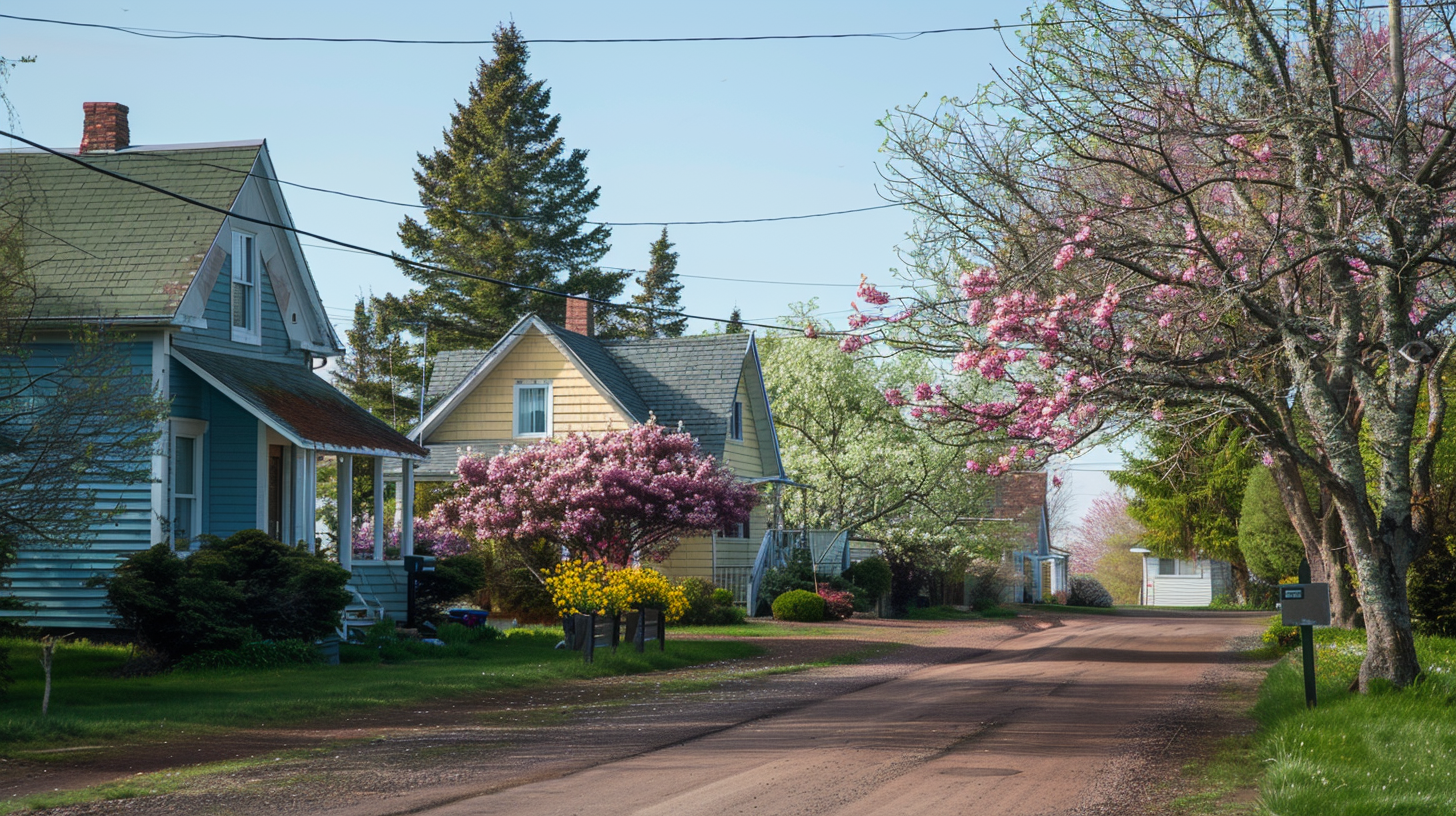
As May arrives on Prince Edward Island, it brings vibrant blossoms, longer daylight hours, and an undeniable sense of renewal. It's the perfect time to turn our attention to the exterior of our homes and embrace the opportunity to enhance curb appeal. In this post, we'll explore the significance of curb appeal and its impact on visitors, potential buyers, and the overall value of your property. We'll also provide a comprehensive guide filled with practical tips and ideas for transforming your home's exterior into a stunning showcase. The Significance of Curb Appeal First Impressions Matter Curb appeal plays a crucial role in creating a memorable first impression. Whether you're welcoming guests, trying to sell your home, or simply aiming to make a positive impact on your neighbours, the exterior of your property sets the stage for all interactions. Increased Property Value Investing in curb appeal can significantly increase the overall value of your property. A well-maintained and visually appealing exterior not only attracts potential buyers but also justifies a higher asking price. It's an investment that pays off. Personal Satisfaction Enhancing curb appeal is not just about impressing others; it's also about creating a space that you love. A beautiful home exterior contributes to your personal satisfaction and pride of ownership, making your house feel like a true home. Practical Tips for Enhancing Curb Appeal 1. Landscaping with Purpose Landscaping is one of the most effective ways to boost curb appeal. Consider planting a mix of flowers, shrubs, and trees that thrive in PEI's climate. Add mulch to garden beds for a polished look, and keep lawns neatly trimmed. Regularly prune trees and shrubs to maintain a well-groomed appearance. 2. Exterior Paint and Finishes Freshen up your home's exterior with a new coat of paint. Choose colors that complement your home's architectural style and the surrounding environment. Pay attention to the condition of doors, trim, and shutters, and repaint or refinish them as needed. 3. Entryway Enhancements The entryway is the focal point of your home's exterior. Consider upgrading the front door with a stylish and inviting design. Add decorative hardware, a fresh welcome mat, and well-placed potted plants to create an inviting entry. 4. Lighting for Ambiance Outdoor lighting can transform your home's appearance during the evening hours. Illuminate pathways, entryways, and architectural features with strategically placed fixtures. Consider energy-efficient LED lighting for both aesthetics and cost savings. 5. Address Maintenance Issues Take the time to address any maintenance issues on the exterior of your home. Repair damaged siding, replace missing or broken roof shingles, fix cracks in the driveway or walkways, and clean gutters regularly. These maintenance tasks not only enhance curb appeal but also protect your investment. 6. Statement Features Consider adding statement features that catch the eye and reflect your personal style. This could include a decorative fence, an elegant pergola, or a water feature in the front yard. Make sure these features harmonize with your home's overall design. Conclusion Enhancing curb appeal is an investment that pays off in many ways, from creating a lasting impression on visitors and potential buyers to increasing the overall value of your property. With the arrival of May, now is the perfect time to transform your home's exterior into a beautiful showcase that brings joy to you and everyone who passes by. If you're ready to embark on the journey of enhancing curb appeal, Maple Arc Construction is here to help. Our team of experts can guide you through every step, from landscaping and exterior finishes to entryway enhancements and statement features. Together, we can turn your vision of a stunning home exterior into a reality that shines brightly on Prince Edward Island.
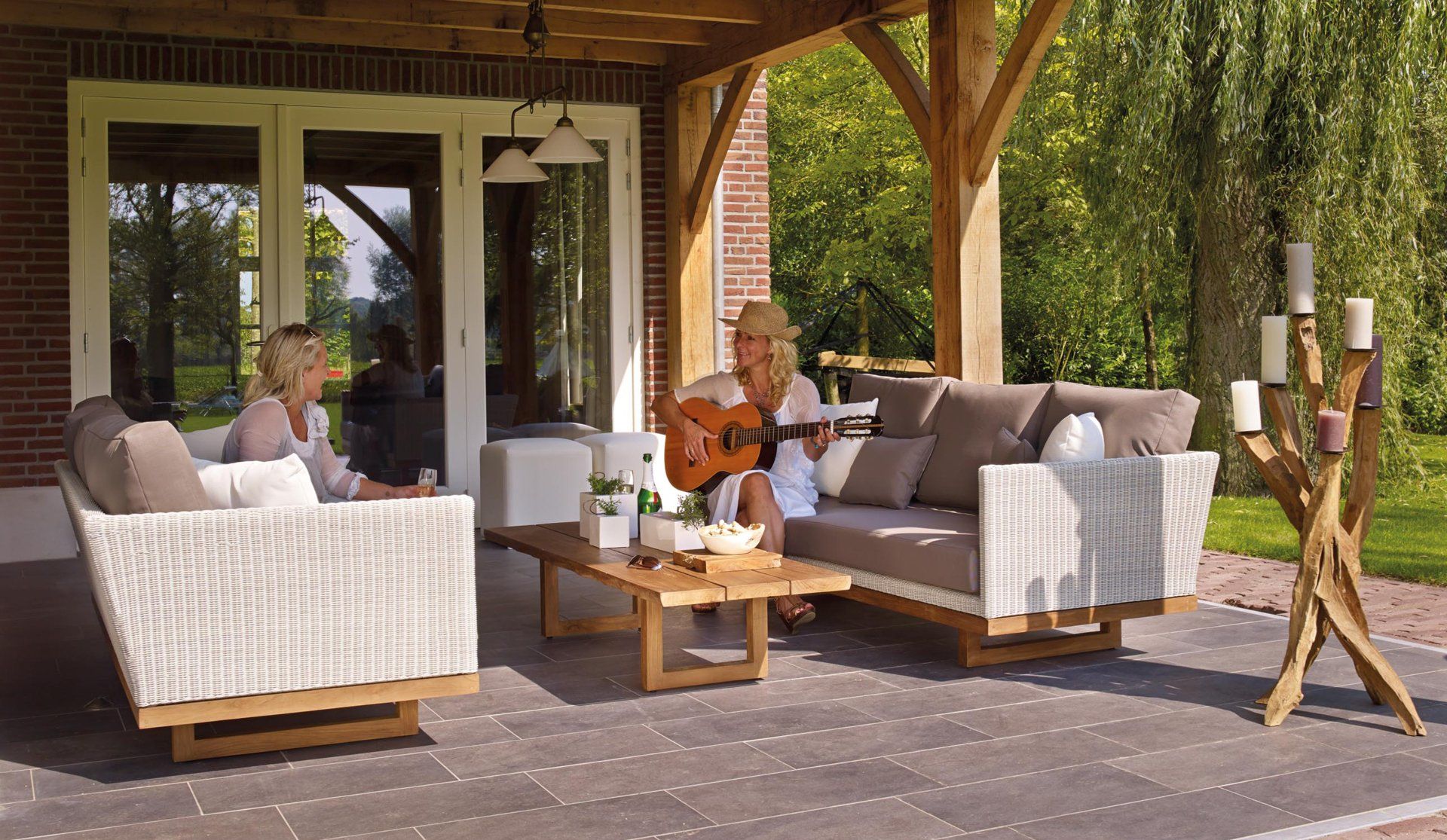
With the arrival of March in Prince Edward Island, a sense of anticipation fills the air. Winter's grip begins to loosen, and the promise of warmer days and blooming landscapes beckons homeowners to step outside and embrace the great outdoors. Spring is the perfect time to embark on outdoor projects that can transform your property into a dream outdoor space. In this blog post, we'll explore the seasonal opportunities of spring, highlighting its advantages for outdoor projects. We'll also provide inspiration and guidance for planning and executing various outdoor projects that align with your vision and aspirations. Seasonal Outdoor Opportunities Favorable Weather Conditions Spring offers some of the most comfortable weather conditions for outdoor work. With milder temperatures and reduced humidity, you can tackle projects without the discomfort of summer heat or the challenges of winter cold. The pleasant weather also makes it ideal for spending extended hours outdoors. Extended Daylight Hours As the days grow longer in spring, you have more daylight hours to dedicate to your outdoor projects. This extended daylight not only allows you to make steady progress but also provides ample time to fine-tune the details of your outdoor space. Enjoyment Throughout the Warmer Months Starting outdoor projects in spring ensures that you can enjoy the fruits of your labor throughout the warmer months. Whether it's a new deck for outdoor gatherings, a vibrant garden to admire, or well-placed outdoor lighting for evening ambiance, your completed projects will enhance your outdoor living experience. Inspiration and Planning 1. Designing Your Dream Deck - A deck can be the centerpiece of your outdoor space, providing an inviting area for relaxation and entertainment. Begin by envisioning the style and size that suits your needs. Consider features like built-in seating, a pergola for shade, or a fire pit for cozy evenings. Plan your deck layout to maximize space and views. 2. Revamping Your Garden - Transform your garden into a lush oasis by planning a variety of plants and flowers that bloom throughout the spring and summer. Select a color scheme that complements your home's exterior, and incorporate elements like garden pathways, decorative pots, and seating areas to enhance the overall charm. 3. Adding Outdoor Lighting - Outdoor lighting can create a magical ambiance in your outdoor space. Explore options such as string lights, lanterns, or path lighting to illuminate your garden, deck, or patio. Well-placed lighting not only extends the usability of your outdoor space but also adds a touch of elegance. 4. Creating Functional Outdoor Living Areas - Consider creating distinct functional areas in your outdoor space, such as a dining area, lounge space, and cooking station. Select outdoor furniture and accessories that match your desired style and purpose. Thoughtful planning ensures that each area serves its intended function while contributing to the overall aesthetic. 5. Incorporating Water Features - The soothing sound of water can elevate the tranquility of your outdoor space. Explore options like a bubbling fountain, a small pond, or a meandering stream. Water features not only add visual interest but also create a sense of serenity. Conclusion Spring is a season of renewal and opportunity, making it the perfect time to embark on outdoor projects that will transform your property into a dream outdoor space. With favorable weather conditions, extended daylight hours, and the promise of enjoyment throughout the warmer months, there's no better time to bring your vision to life. If you're ready to turn your outdoor dreams into reality, Maple Arc Construction is here to help. Our team of experts can assist with every aspect of planning and executing your outdoor projects, ensuring that your space reflects your unique style and aspirations. Don't miss out on the endless possibilities of spring; start creating your dream outdoor space today!
